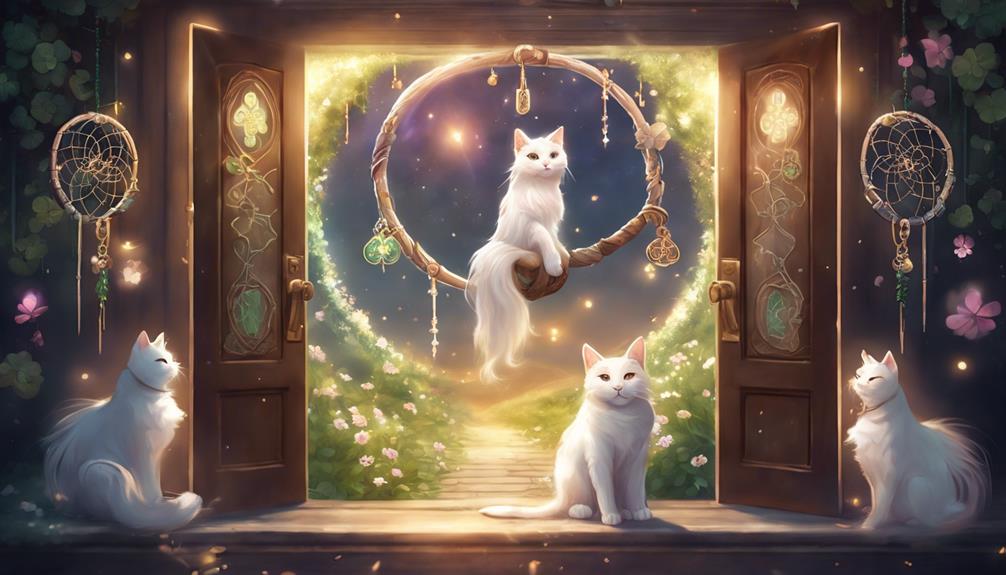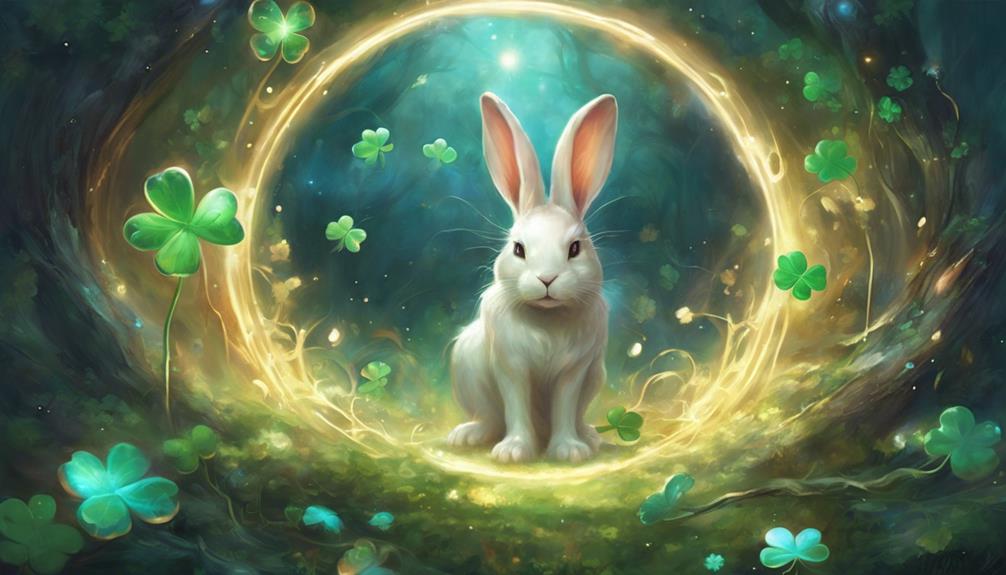Carrying a rabbit's foot for good luck has been a long-standing tradition in many cultures. However, the question remains: do these charms truly hold power, or is it merely a psychological placebo effect at play? The belief in good luck charms is a fascinating phenomenon that has intrigued people for generations. The discussion on their effectiveness and the mechanisms behind their perceived influence continues to spark curiosity and debate among believers and skeptics alike.
Key Takeaways
- Good luck charms have historical and cultural significance, embodying hope and protection.
- Belief in lucky charms influences confidence, goal-setting, and performance.
- Charms trigger superstitious thinking, boosting expectations and task performance.
- Practical applications include enhancing psychological well-being, persistence, and success in various endeavors.
Origins of Good Luck Charms

Good luck charms, with their origins tracing back through millennia, hold significant cultural and historical importance across various civilizations. The ancient Greeks, for example, believed in the power of charms to safeguard against evil and bring good fortune. These lucky charms were not merely trinkets but symbols of protection and prosperity. Sailors often carried charms to guarantee safe voyages, athletes wore them to improve performance, and individuals used them to counteract bad luck.
One prevalent belief among many cultures is the notion of the evil eye, a malevolent glare that can bring misfortune. To counteract this, people turned to good luck charms as a form of defense. The idea of using objects to attract positive energies and repel negative forces has persisted for thousands of years, evolving and adapting to different cultural contexts. Good luck charms serve as tangible reminders of the human desire to control fate and influence the course of events.
Cultural Beliefs and Traditions
Cultural beliefs and traditions intricately weave the fabric of society, shaping individuals' perspectives and actions in profound ways. Good luck charms hold a significant place within these cultural frameworks, symbolizing hope, fortune, and protection. Across various cultures, the use of lucky charms is deeply rooted in the belief that these objects possess the power to influence one's destiny positively. Rituals and superstitions surrounding these charms often involve specific practices aimed at invoking luck and warding off misfortune. For example, in Japan, students frequently carry lucky charms during exams to improve their chances of success, highlighting the belief in the charm's ability to bring good fortune. Visiting shrines and temples to acquire or pray for luck is a common tradition in many societies, underscoring the universal appeal of seeking blessings for prosperity. Children using lucky charms in schools further exemplify how these symbols are integrated into everyday life, emphasizing the enduring role that luck plays in cultural beliefs and practices.
Symbolism and Meaning Behind Charms

Embedded within the intricate tapestry of cultural beliefs and traditions are the deep-rooted symbolism and profound meanings behind various charms. These symbols hold significant cultural significance and are believed to improve luck and bring positive attributes to those who possess them. Here are some examples of the symbolism and meaning behind popular lucky charms:
- Four-leaf clovers: Symbolize luck and positive attributes, believed to bring good fortune to the finder.
- Horseshoe charms: Made of iron to ward off fairies and protect against evil, believed to bring luck and protection to the wearer.
- Dice charms: Popular symbols of luck, especially in games and wartime traditions, representing chance and good fortune.
- Ladybugs: Believed to bring good luck and seen as signs of impending love in some cultures, symbolizing prosperity and happiness.
These charms not only hold superstitious value but are also deeply intertwined with cultural beliefs, making them powerful symbols of luck and positivity.
Psychological Aspect of Luck Charms
Exploring the psychological impact of luck charms reveals how beliefs in these symbols can profoundly influence individuals' confidence and performance levels. Good luck charms hold significant power in shaping people's attitudes towards challenges. The belief in lucky charms instills a sense of confidence in individuals, leading them to approach tasks with a positive mindset. This heightened confidence can translate into improved effort as individuals are more likely to take risks and aim for success.
Psychologists have found that the psychological aspect of lucky charms is closely tied to self-efficacy and goal-setting. Research by psychologist Lysann Damisch suggests that lucky charms can enhance performance by boosting individuals' belief in their abilities. The activation of superstitious thinking triggered by these charms can lead to increased persistence and focus on tasks at hand. Volunteers who carried lucky charms demonstrated higher confidence levels and a greater willingness to persevere through challenges, highlighting the profound impact of these symbols on psychological well-being.
Ways Charms Influence Behavior

Good luck charms influence individuals' behavior by instilling confidence and fostering a positive mindset. They have the power to shape behavior through various mechanisms:
- Activation of Superstitious Beliefs: Lucky charms like a lucky coin or a lucky horseshoe activate superstitious beliefs, boosting self-efficacy and performance.
- Setting Higher Personal Goals: Research, including studies by Psychological Science and Richard Wiseman, suggests that belief in lucky charms can lead individuals to set higher personal goals and increase their persistence in achieving them.
- Boosted Expectations: The psychological effects of lucky charms, such as four-leaf clovers or a rabbit's foot, can boost expectations and improve task performance by instilling a sense of luck and positivity.
- Focus and Alleviation of Anxiety: Individuals with lucky charms, much like legendary basketball player Michael Jordan and his lucky shorts, often find that the charms help them focus better and alleviate performance anxiety, leading to improved outcomes.
Frequently Asked Questions
How Does Lucky Charms Work?
Lucky charms work by tapping into ancient beliefs and superstition psychology to instill positive energy and boost personal confidence. Their symbolic power and cultural significance create a strong personal connection, manifesting luck through folklore traditions.
What Do Good Luck Charms Do?
Good luck charms attract positive energy, enhance superstitions, and help manifest luck. They hold magical properties, carry cultural significance, and symbolize good fortune. Personal beliefs in these charms can boost confidence and influence outcomes in a favorable way.
How Do You Pick a Good Luck Charm?
When choosing a good luck charm, individuals rely on personal belief, cultural significance, and symbolic meaning. Intuition often guides the selection process, blending with historical context and modern variations. The debate between superstition and logic underscores the quest for a personal connection.
What Are the 7 Lucky Charms?
The seven lucky charms, including lucky pennies, rabbit's foot, four-leaf clover, lucky horseshoe, evil eye, lucky bamboo, and wishing stones, are believed to bring good fortune. Individuals carry these charms to attract luck and positive energies.
Conclusion
To sum up, good luck charms serve as cultural talismans that weave together threads of tradition and symbolism to create a tapestry of hope and positivity. Like a beacon guiding sailors through stormy seas, these charms illuminate the path to fortune and success. Through the lens of psychology, they empower individuals to embrace their potential and manifest their dreams. In a world filled with uncertainty, good luck charms stand as steadfast companions, offering comfort and courage on life's journey.
